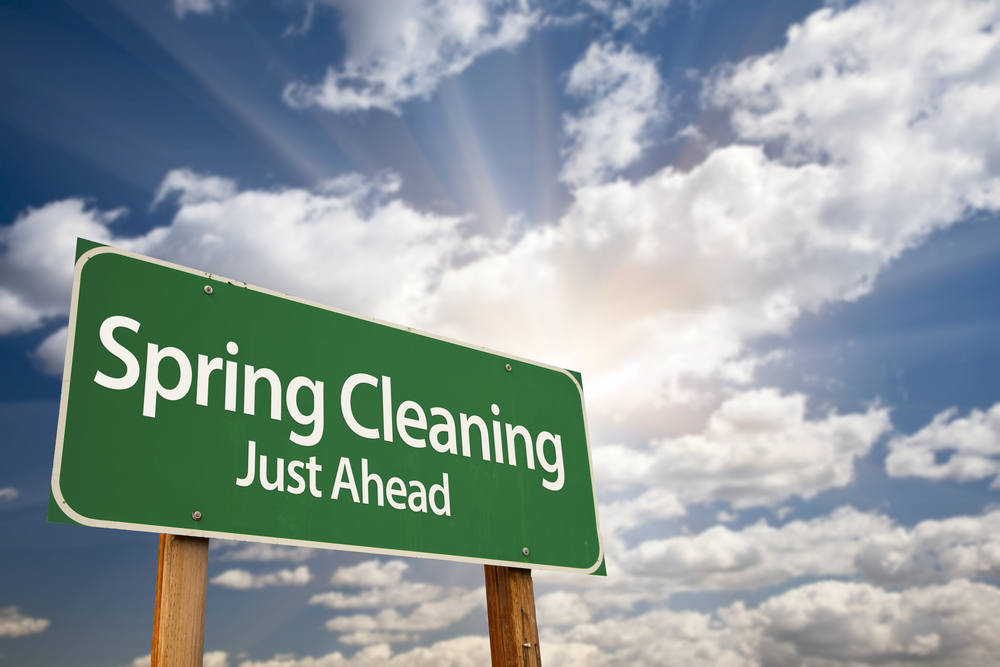
With warmer weather just around the corner, lots of us are thinking about dusting off the winter blues — literally. If you’re getting ready to give your home a good scrub down for spring cleaning, here are some tips to help you do it as environmentally friendly as possible:
- Reduce: The first step to fighting messes and keeping your home spic-and-span is getting rid of all that stuff you never use. Go through all the places where it accumulates–try closets, junk drawers, out-of-reach shelves, attics and basements, and any other place where you’re inclined to toss stuff as you say, “I’ll deal with this later”and be diligent about– separating out what you really will use someday from what you never will. Be honest: you may say you like that sweater your aunt gave you for Christmas in 2004, but if it still has the tags on it, you aren’t ever going to wear it. And be practical: do you really need that quesadilla maker? We’re not suggesting that you trim down to an uber-minimalist lifestyle, but the quickest way to cut your cleaning time is to simply have less stuff to clean.
- Reuse: Now you have a pile that you’re ready to get rid of–but wait. Don’t just trash it. First, go through and see if any of those items could serve a purpose you haven’t thought of before: Do you have enough books to stack up and use as a side table? Can you take the frames off those ugly paintings and use them elsewhere? There are ways to reuse everything from single mittens and broken guitar strings to holiday greeting cards and ceramic tiles–so while we aren’t suggesting you keep all this around just in case, see if any of what you have can save you from buying something else.
- Donate: Once you’ve taken stock of what you can use, separate out items that someone else might need. This includes dishes, kitchen gadgets, clothes, books, magazines, toys, home decor–all of these items could find a second life with someone else. If you need instant gratification, just drop it all off at your local Goodwill or Salvation Army; if you’re slightly more patient, try offering items for sale or barter on Craigslist, turning your goods over to an artist, donating through Freecycle, or seeing what you can get for that collection of comic books on eBay. Your house will be less cluttered, someone else can skip buying new, and the landfills will be that much emptier.
- Recycle: Once you’ve exhausted all the other options, it’s time to hit the recycling bucket. Of course you’re already recycling newspapers, magazines, and any glass that isn’t salvageable, but take a second look at the rest of your trash, too. Did you clean out the fridge? Find a compost pile. Get rid of old electronics, from cell phones to VCRs to ancient computers, by passing them off to retailers with a recycling program or to a specialized electronics recycling company. Check anything plastic to make sure it’s recyclable, and make sure to safely dispose of anything that’s not recyclable or trash-friendly, like old paint or batteries.
- Get the right home organization tools: Now that you’ve managed to weed out the useless from the useful, you need to find a system for organizing what you’ve got left–because if you can’t find something when you need it, you’d might as well not have it at all. For this, you’ll need storage containers, but that doesn’t mean you need to stock up on (non biodegradable) plastic bins. Instead, try cardboard boxes wrapped in pretty paper, bamboo baskets, or cloth bags made from old t-shirts. Raise your storage with eco-friendly shelving to free up floorspace and make your rooms look bigger. And note: if, while you’re organizing, you find items that don’t seem to fit with anything else, those are likely goods you could add to the “donate” pile.
Check back in later this month for Part Two, which will address eco-friendly cleaning products and more!